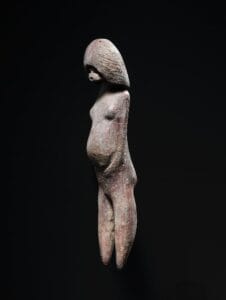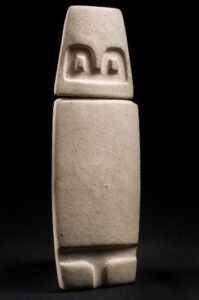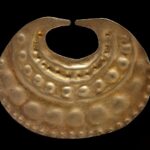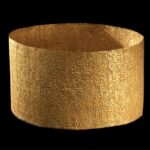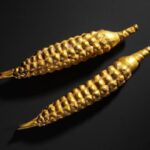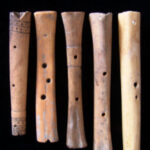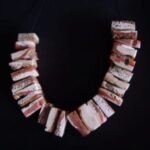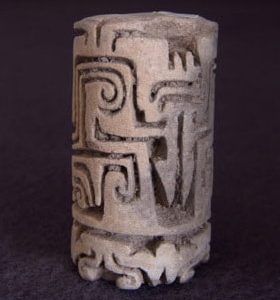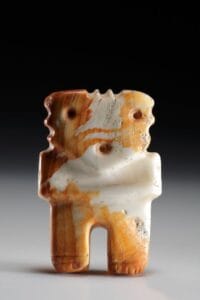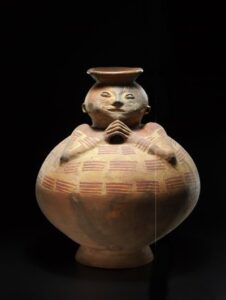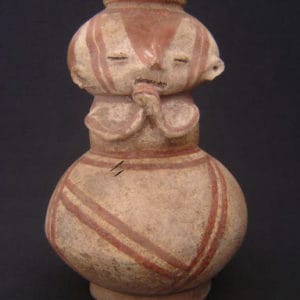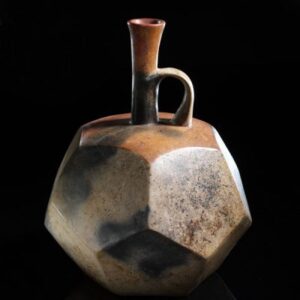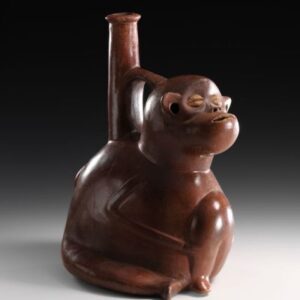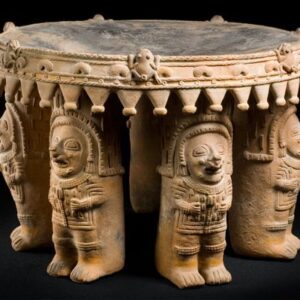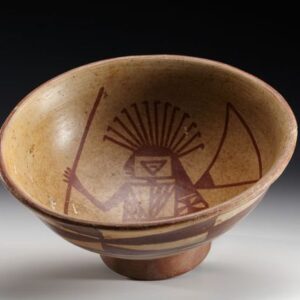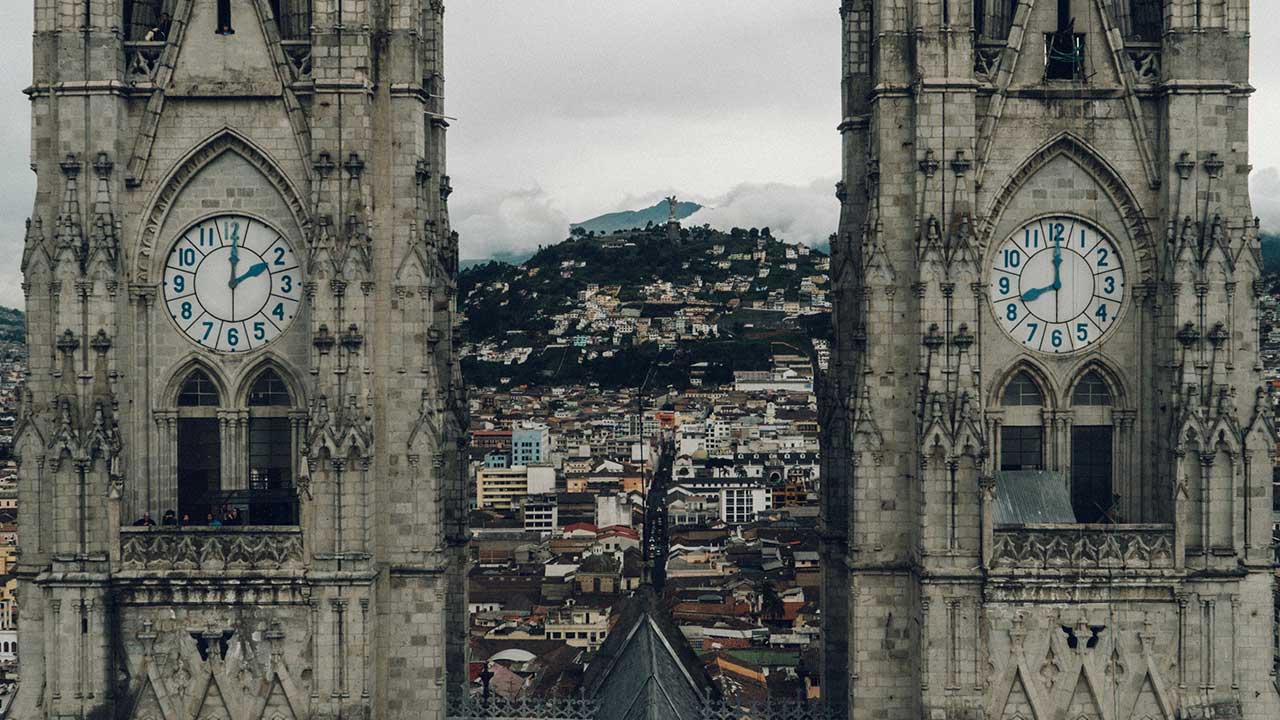

Estimated reading time: 5 minutes – Written by our friend Lupita Ruiz-Tolento
Ecuador and Quito are not particularly known for their museums. And if there’s one that people surely know about, it’s probably the museum of the painter Guayasamín. But museums here are plentiful, and although their collections may not be as trendy or iconic as the Mona Lisa, we dare say that Casa del Alabado can compete with internationally appraised musea. If there were an Oscar for museums, this would be a winner. Our only disappointment is the realization that most travelers overlook this beautiful and elaborate presentation of Ecuador’s rich pre-Columbian history. The colonial-style house holds approximately 5,000 artifacts inside its pristine white walls. Perhaps it’s because its doors have only been open since 2010, but this museum on Cuenca street isn’t as popular as it deserves to be.
Let us explain why it needs to be on the map. Casa del Alabado does a lot of things really well. First of all, the museum building is impressive in its own right, and an architectural gem. Secondly, the curators rethought the conventional organization of a collection (chronological or per culture), and instead arranged the permanent exhibit according to the pre-Columbian worldview or cosmovisión Andina. And finally, we love how overall friendly it is to families and visitors, a testament to its educational mission. Here’s what we learned on our visit:
ECUADOR’S HUMAN HISTORY
We’ll start with a word on something that we would like to see the tourism industry in South America do better. The continent’s indigenous past (and present), which is a big part of the draw for travelers, is usually framed in reference to the Incas. The many other cultures that made up the continent’s rich history are virtually erased, and Ecuador is no exception (check out the fascinating overview of pre-Columbian cultures). So we will take any opportunity to highlight anything that pays homage to the country’s many different pre-Columbian cultures and peoples, which in turn allows tourism to reflect history more accurately. Casa del Alabado does a superb job of making thousands of years of Ecuador’s human history come to life.
ECUADOR’S ARTISTIC HERITAGE
Ecuador’s ecological diversity was a determining factor for how each culture, depending on where they lived, expressed its artistic abilities. Among Casa del Alabado’s artifacts, you’ll see those of the Bahía, Carchi Pasto, Cerro Narrío, Cosanga, Puruhá, Inca, and Manteño Huancavilca. Honestly, we were surprised that there were so many more, and a little ashamed we weren’t familiar with them before. The materials they used included ceramic, stone, gold, metal, textile, and wood, to name a few.
The artifacts itself are utterly fascinating. Some are telling of ceremonial traditions, such as the ceramic pututo (a seashell-shaped instrument) which also illustrates material exchange between cultures of the coast and the sierra. Others offer clues into a culture’s main economic activity and prestige, such as the Cosanga’s anthropomorphic figures, whose round shape signifies wealth. Some artifacts illustrate how the value placed on material characteristics differed with time: for the Manteño-Huancavilca, the rusting of metals was desirable because of the sacred implications of its colors. The exhibit showcases the technical excellence of ancient artists, working with an array of raw materials. When visiting the Casa del Alabado, again and again, we are taken aback by each culture’s distinct aesthetic.
ANDEAN WORLDVIEW
Almost equally impressive as the artifacts themselves is the thoughtful, innovative way they are organized. Forget about organizing chronologically or per culture. The museum honored the ancient cultures, dividing its spaces into three categories, according to the Andean worldview (cosmovisión Andina): The Underworld, The Earthly World, and The Overworld. The Underworld is believed to be composed of all things subterranean and dead. You’ll find stone representations of ancestral figures, as well as highly decorated funerary urns. Plants, animals, and human societies live in The Earthy World, the present. It is filled with practical items, amulets, and spiritual artifacts that help explain human connection to other cosmos. Characterized by the Gods, The Overworld displays artifacts that highlight the superior craft, symbolism, and iconography of Ecuador’s pre-Columbian cultures.
THE HOUSE
The museum building itself carries significance beyond being a beautiful place of exhibit. A renovated colonial home, and one of the oldest in the district, it has embodied the historical changes that Quito has witnessed over the centuries. It has been everything from a mill, a rental house, to a warehouse that stored products for the nearby businesses. In this way, the house’s history has mirrored the changing dynamics of the city and sector.
One of our favorite parts of the house is the patio, which is so characteristic of the colonial architecture in the sector. On a sunny day, the light shines into it and illuminates the white adjacent walls and arches so brilliantly, giving it a celestial feel.
On the south side of Quito’s Plaza San Francisco, the city’s largest public square, cobblestone streets are lined with shops that sell grains in bulk. It’s a quieter contrast to the flocks of pigeons and concentration of street vendors on the Plaza San Francisco itself, but the vibe is just as bustling and dynamic. Just around the corner, on Cuenca street, an old colonial home tells a story of thousands of years of Ecuador’s human history.
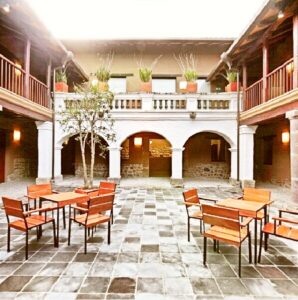

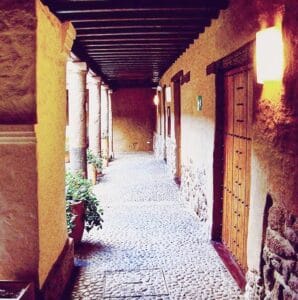

LOGISTICS FOR YOUR VISIT
Location: Calle Cuenca N1-41, between Bolívar y Rocafuerte streets. If you’re facing Iglesia San Francisco, Cuenca street is immediately to your left.
Trole stop: Santo Domingo (this stop is on Bolívar street, so you’d keep walking up Bolívar — towards the center of Old Town — and run into Cuenca street).
Ecovía stop: Marín Central (this stop is by Chile street, so you’d keep walking up Chile and then left on Cuenca). Have a map handy!
Hours:
Everyday (except Christmas and New Year’s) from 9:00 a.m. to 5:30 p.m.
Wednesday hours: 1:30 p.m. to 5:30 p.m.
Cost:
General admission: $6
Children aged 4-12: $2
Children under 3, and people with disabilities: Free
Daily guided tours (Spanish, English, and French) take place at 10:30 a.m., noon, and 3:30 p.m.
FYI: You can reserve a guided tour at no extra cost by contacting the museum directly at educacion@alabado.org or +593 22 280 940 or +593 22 280 772 (ext. 19).
The museum has wheelchair-accessible ramps, an elevator, and an available wheelchair.
OTHER TAKIRI TIPS:
- If you want to stay in the area for lunch time, here are some of our suggestions:
- Casa Gangotena ($$$) – It is literally right in front of the museum, and one of Quito’s luxury hotels.
- Café Tianguez ($$) – This is the café right on the Plaza San Francisco, with the green umbrella tables.
- Mercado San Francisco ($) – This is the area’s version of Quito’s Mercado Central. Affordable, very traditional food and produce!

